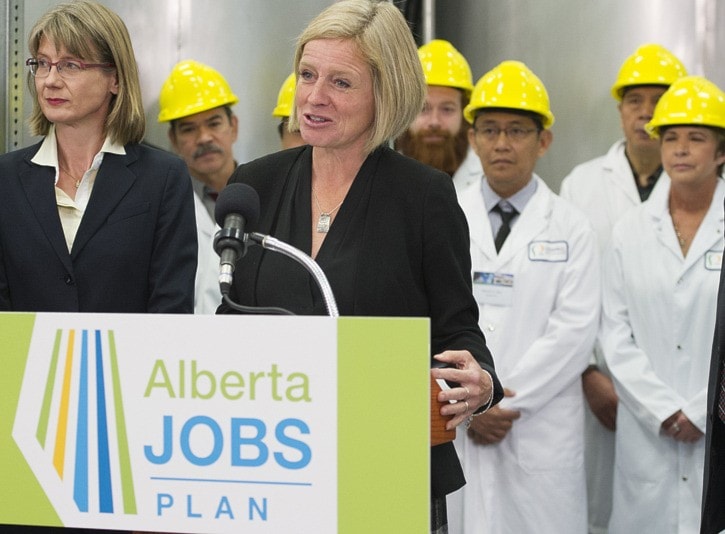Premier Christy Clark’s “jobs plan” propaganda is gearing up for another election, complete with heavy-rotation TV ads assuring B.C. hockey and football fans that “our opportunity is here.”

The stated purpose of these feel-good ads is to highlight overdue investments in trades and technical education, and extol the virtues of the government’s housing policies.
The jobs plan has been Clark’s marketing vehicle since she assumed the leadership of the BC Liberal Party in 2011. It was inspired by former prime minister Stephen Harper’s post-recession “economic action plan,” faded billboards for which can still be seen around B.C.
This marketing must work regardless of government ideology, because Alberta NDP Premier Rachel Notley now has an “Alberta jobs plan” that also involves her standing in front of smiling people wearing hardhats.
Unfortunately, in most areas of B.C. as well as Alberta, what’s lacking are actual jobs. Clark constantly repeats the figure of 191,000 net new jobs in B.C. in the past five years, and glosses over the fact that all of that job growth has occurred in southwest urban areas around Vancouver and Victoria.
The rest of the province has seen a net loss of jobs. Mills and mines have shut down or reduced production, and the gas fields of the northeast hit a low ebb with a series of delays to liquefied natural gas export proposals.
There is recovery in energy and commodity markets. I’m assured by Dawson Creek Mayor Dale Bumstead among others that drill rigs are returning to the Montney shale, a rich source of petroleum liquids that can be mixed with the Alberta heavy oil that will eventually start moving south and west in greater quantities.
The forest industry is in uncertain times, with declining timber supply and U.S. trade threats, and it’s looking for a break from the B.C. government in the pre-election budget that will be revealed in February. A legacy of B.C.’s resurrected provincial sales tax is that we’re the only place left in Canada where PST is charged on electricity bills.
And for all of Clark’s rhetoric about the lowest personal income taxes, the business tax environment is not attractive.
According to the government’s own Commission on Tax Competitiveness, sales tax still lands on most machinery and equipment, for which B.C. has the third lowest investment rate in the country.
Combining corporate income tax, sales tax and non-residential property tax, B.C. comes in well above the national average, with a “marginal effective tax rate” of 27.9 per cent compared to 18.9 per cent for the rest of Canada.
In the urban southwest, there is a building boom, an increase in service and technology jobs and steeply increasing cost of living driven by real estate prices. So we have areas with jobs but no place to live, and areas with cheap housing and no jobs.
The latest official version of Clark’s “jobs plan” was rolled out last week. The deadline for three LNG plants moves to construction underway by 2020, and mine opening and expansion goals are also kicked down the road.
The new headliner is “innovation,” with UBC president Santa Ono heading an effort to stimulate growth of new technology businesses through university research.
There will also be a “climate action” jobs plan, which seems even more vague. My guess is, look for lots of tree planting as well as paving this spring.
I wish I could tell you the NDP opposition has a clearer strategy for 2017, but so far that’s not the case. More on that in a subsequent column.
Tom Fletcher is B.C. legislature reporter and columnist for Black Press. Email: tfletcher@blackpress.ca Twitter: @tomfletcherbc
